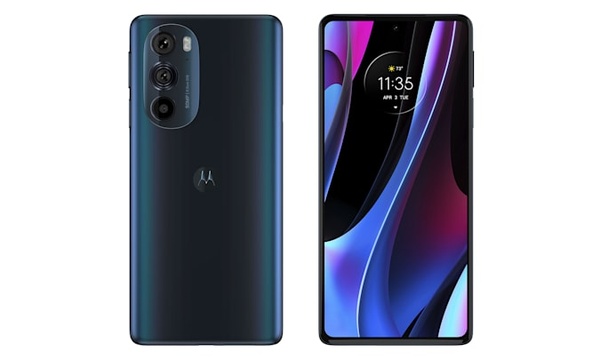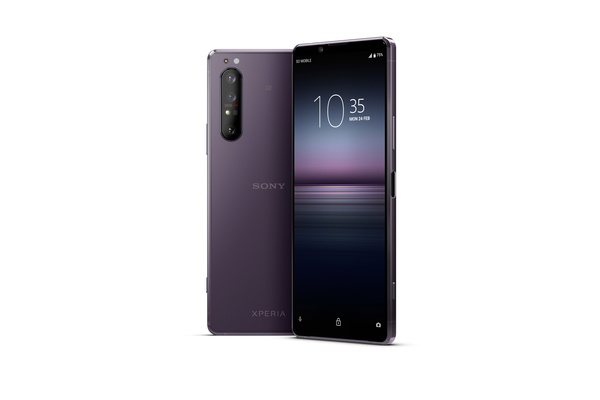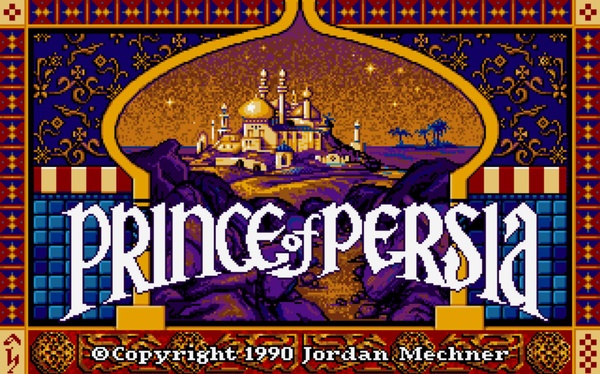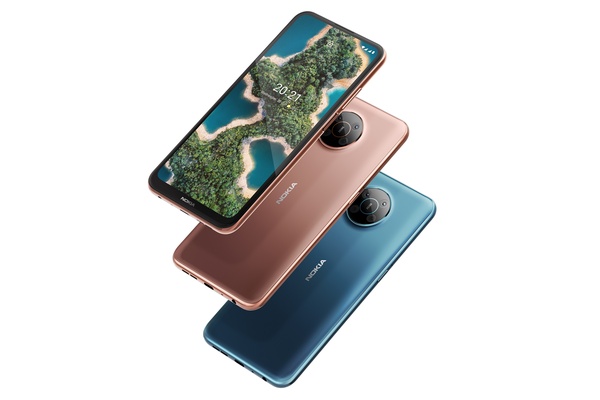cURL error 35: OpenSSL SSL_connect: SSL_ERROR_SYSCALL in connection to feeds.afterdawn.com:443
Or try one of the following: 詹姆斯.com, adult swim, Afterdawn, Ajaxian, Andy Budd, Ask a Ninja, AtomEnabled.org, BBC News, BBC Arabic, BBC China, BBC Russia, Brent Simmons, Channel Frederator, CNN, Digg, Diggnation, Flickr, Google News, Google Video, Harvard Law, Hebrew Language, InfoWorld, iTunes, Japanese Language, Korean Language, mir.aculo.us, Movie Trailers, Newspond, Nick Bradbury, OK/Cancel, OS News, Phil Ringnalda, Photoshop Videocast, reddit, Romanian Language, Russian Language, Ryan Parman, Traditional Chinese Language, Technorati, Tim Bray, TUAW, TVgasm, UNEASYsilence, Web 2.0 Show, Windows Vista Blog, XKCD, Yahoo! News, You Tube, Zeldman
AfterDawn.com
Daily updated technology newsMotorola's new flagship is here: Edge+ without an edge 24 Feb 2022, 5:50 pm

Nevertheless, the new and improved Edge+ sees to challenge the large phone category recently occupied by Samsung's greatest, Galaxy S22 Ultra.
Motorola even has stylus support for the new Edge+, albeit an optional extra if you decide to go that way. That also means there is no internal slot for the stylus like on the Ultra.
Specs-wise we're looking at a Snapdragon 8 gen 1 powered Android with a 6.7 inch Full HD+ display that offers up to 144 Hz refresh rate. In terms of RAM you can choose between 8 or 12 gigs and storage ranges from 128 to 512 gigabytes.
Other features include stereo speakers with Dolby Atmos support, a 4800 milliamp hour battery with fast charging, 15-watt wireless charging as well as reverse charging that can charge the optional stylus.
Camera system now offers a 50 megapixel default shooter and another 50 MP ultrawide camera. Third senson on the back is a measly 2 MP for depth sensing and isn't available for photos. This means that unlike most of its competitors it does not offer a zoom camera.
However, it does offer a mighty selfie shooter, at least in terms of pure resolution. The front-facing camera has a 60 megapixel sensor, which dwarfs most competition, although quality is yet undetermined.
As software extras, Motorola offers a Smasung DeX-like experience with monitors and TVs. You can easily connect the mobile device with external displays and use it with the dedicated UI they call Ready For.
While the new Moto Edge+ is well-equipped it isn't quite up to par with the latest and greatest Samsung. But it is also fair bit cheaper. According to Engadget, it start at around a thousand dollars, but you'll get a $100 discount early on. Whether that is a fair price for the is for you to decide.
However, Motorola hasn't yet revealed the release date.

Realme Android update policy outlined (2022) 23 Feb 2022, 10:59 am

Realme is currently pushing its way to Western European markets with affordable, yet feature-rich Android phones. Company uses its own Android skin, called Realme UI and has been slightly slow to make bold promises about its Android update policy in general.
But they recently clarified how they plan to deliver Android updates for their phones.
Here's the outline:
- Realme GT and Realme GT Pro series will get three major Android updates
- Realme GT Neo and Realme GT Master series will get two major Android updates
- "Number models", such as Realme 8, will get two major Android updates
- For everything else, such as Realme C series, Realme doesn't make any promises whatsoever, so phones might get only one Android update - or none at all.
For the upcoming updates, here's the summary of Realme's current handsets and how they'll get updated within next year or so:
- Realme phones that will get Android 12 update
- Realme phones that will get Android 13 update (in late 2022 or year 2023)
Google testing new dark mode: yellow links, actual black background 19 Feb 2022, 4:57 pm

But as we found out recently, Google is now conducting a limited test on handful of users that would change one very specific thing on its search results page: the link colors.
Company has kept the results' colors in "standard webpage blue" since the searvh itself was launched, back in 1990s.
But with the new limited dark mode test, Google has changed the link color for results from that good olde blue to pale yellow.
Google seems to be testing a new color scheme for its dark mode search results. Links are now yellow-ish and the background is completely black.
-- Petteri Pyyny (@pyyny) February 18, 2022
I get the new(?) colors when logged in to G and using Edge and also w/ incognito Chrome, but not on anything else. #serp #seo #google pic.twitter.com/OzD5nxe69V
Additionally, the new test version dark mode uses completely black background; the widely used dark mode version has "very dark gray" instead of real black as its background.
The change makes sense, as OLED displays become more popular even on desktop PCs. If the pixel is completely black, OLED display keeps that pixel totally switched off - thus, saving energy. But if the pixel is somewhat colored, even with very dark gray, the pixel has to be lit. So, a dark mode that is completely black§ saves energy for users using OLED or AMOLED displays.
And that might explain the trial, too: blue links on black background areb't as readable as yellow ones are. Actually, back in 1970s, when most computers had black background, most computer terminals used either green or yellow text in order to make them more readable.
In our tests, the new yellow/black Google version appeared only on one Windows 10 PC. On that PC, the new design popped up with Edge browser when logged in to Google services, but not in Edge's private mode. And on Chrome (on same PC), only the incognito mode revealed the new design, not the "normal" Chrome mode.
Google is most likely conducting a limited user research on usability and might change the dark mode appearance for everybody if the data they gather supports the decision.
The first Android 13 version released: it is a developer preview, not for normal use yet 10 Feb 2022, 8:02 pm

The idea behind the developer preview release is to let developer community know what is coming up, so they can prepare their apps for the upcoming, actual release of the Android 13. Not all the new features are there yet - and it is bound be full of bugs and problems.
If you're adventurous, tho, you can download it and install it, provided you have a supported Google Pixel phone (Pixel 4 is the oldest Pixel to support Android 13). But we'd advise very strongly against that.
Anyways, this time around the visuals of the operating system aren't changing as much as they did when Google introduced Android 12. Android is simply taking its Android 12 -based Material You theming a step further, nothing else.
Privacy controls are now better: with various apps wanting to access your photos, you can actually choose which photos you want the app to have access to. So, in case of various social media apps, you don't have to allow them to go through all of your photos in order to upload a new selfie to your preferred social media.
In terms of visuals, Android 13 will now allow also the app icons to adapt to the selected Material You theme, making the entire operating system look more calm and balanced.
For those of us speaking more than one language, Android 13 finally allows choosing the preferred language per-app basis. So, for example, you can keep your actual operating system in English, but use selected apps in German. Or vice versa.
Tons of other tweaks are there, too, but we'll cover those in detail once the Android 13 gets more features, as it most likely will, before its expected release in Autumn 2022.
There's also a quite comprehensive list of phones that will get Android 13 once it gets officially released.
Samsung will now provide four major Android updates to its flagship phones 9 Feb 2022, 4:32 pm

It seems like a distant memory when back in, say, 2016, Samsung was ridiculed by Android enthusiasts by its lack of long-term support for its Android handsets. In past years, manufacturers like OnePlus and Nokia, managed to carve themselves a niche among tech enthusiasts with their promise for long support times and several major Android updates.
Since then, Samsung has totally changed its game. Last year, company committed to provide at three major Android updates to all of its higher-end handsets.
But today, Samsung is pushing the promise even further. For its flagship phones, Samsung now promises to deliver four major Android updates.
The promise includes today's Samsung Galaxy S22 series, but also last year's Samsung Galaxy S21 series and its recent foldable phones, Samsung Galaxy Z Flip 3 and Samsung Galaxy Z Fold 3. For other high-end phones, such as pricier A series phones, the three updates policy remains in place.
The update promise effectively means that SGS22 will get Android 13, Android 14, Android 15 and Android 16 updates. Android 16 is expected to be released in Autumn 2025, with updates rolling out probably around Q1/2026 for most flagship phones.
All the devices covered by the Samsung's four updates policy are:
- Samsung Galaxy S22
- Samsung Galaxy S22+
- Samsung Galaxy S22 Ultra
- Samsung Galaxy S21
- Samsung Galaxy S21+
- Samsung Galaxy S21 Ultra
- Samsung Galaxy S21 FE
- Samsung Galaxy Z Flip 3
- Samsung Galaxy Z Fold 3
- Samsung Galaxy Tab S8
- Samsung Galaxy Tab S8+
- Samsung Galaxy Tab S8 Ultra
France wants to get rid of the Netflix button from TV remotes 4 Feb 2022, 4:23 pm

One of them is currently debated by the French National Assembly (parliament) that proposes to ban the ubiquitous Netflix button from all TV remotes sold in the country.
Reasoning behind this is that "too easy" access to Netflix (and other American streaming services that have their own remote buttons, such as Disney+ and Amazon Prime) is harming France's TV channels. So, withouth the easy-to-access streaming button on smart TVs, people would simply sit back and enjoy local TV channels instead.
France has already made it harder for TV manufacturers to promote foreign streaming services: since January, 2022 all smart TVs must highlight French streaming services in their menus over other services.
How France is going to force TV manufacturers to obey the proposed legislation is still somewhat of a mystery. Virtually all TV sets sold in France are the very same models that are sold in other European Union countries, too. Thus, in order to comply with the new law, manufacturers would have to make separate packaging - with crippled remotes - to French markets. Alternatively, manufacturers could remove the Netflix button altogether in entire Europe.
The Netflix button first appeared in American TV sets back in 2011 and were introduced in Europe in 2015.
Word game phenomenon Wordle sold to The New York Times, remains free to play - at least for now 31 Jan 2022, 11:35 pm

Wordle has been everything that modern online services tend not to be: it doesn't have a mobile app. It doesn't have any ads. It doesn't require any registration. It doesn't sell you anything. It doesn't even try to steal all of your time.
No. Instead, the game is available at its own own website.
As far as the gameplay goes: you have to guess an English-language five-letter word. And you have exactly six chances to guess the word.
That's it. You have exactly one word for each day. So, you can't get hooked on it for the entire day. You try the one word and wait for 24 hours to get the next one.
Game has been developed and maintained solely by a British developer Josh Wardle who now announced that he has sold the game to The New York Times magazine:
An update on Wordle pic.twitter.com/TmHd0AIRLX
-- Josh Wardle (@powerlanguish) January 31, 2022
According to NYT, the price tag was "in lower end of the seven figures", meaning that despite not making a dime with the game previously, Wardle earned at least a cool million dollars out of the transaction.
As the sale has been finished, the NYT team and Wardle will now ensure that the game gets transitioned to the New York Times' website with all the user achievements and records in place. NYT has promised that the game will (so far) remain free for all existing and new players.
German court: Entire modern Internet is illegal, embedding anything breaks the GDPR 31 Jan 2022, 10:34 pm

And all this over a 100 euro fee.
Behind all the madness is a court case against an unnamed German website, a lawsuit filed by a single person. And because the website used a specific font.
The website had embedded the Google Webfont to its pages directly from Google Fonts' servers - just like appx. 50 million other sites do.
But how the Internet works, this also meant that the user's browser not only downloaded the website requested, but also the font needed to show the page as intended. And while the user had obviously given the permission to hand out his/her IP address to the website in order to be able to use it in the first place, he/she didn't give the consent to connect to Google servers (in order to get the font).
His browser - as it should - contacted the Google server in the background in order to get the font for the website. And obviously, any connection through the 'net will also reveal the users IP address. And according to the user, he/she had not given explicit permission to do that.
And court agreed.
According to the court, the website in question could have had the font stored locally on its own servers and thus, to avoid the connection to Google servers. And also, according to the ruling, now Google got the users IP address and can potentially do unholy things with it, like build a profile of the user.
Surely, Google's font library can be self-hosted, but it typically isn't, as loading it off Google's servers allows users browsers to find the very same font in cache more often, as different sites tend to use the same fonts (and cache is detected by the entire domain URL address of the font file).
But the ruling also effectively bans all kinds of embedding (without the user's explicit consent): whether it is YouTube videos embedded to news articles or to use CDN-hosted jQuery libraries on your website. Oh, obviously Instagram embeds and stuff like Google Analytics are banned, too.
Few weeks earlier an Austrian court ruled Google Analytics illegal in Europe.
Sony Xperia 1 II gets Android 12 update 27 Jan 2022, 7:26 pm

At least users in Romania and United States have reported the stable Android 12 update so far, reports AndroidUpdateTracker's page for Sony Xperia 1 II. Sony doesn't participate in official Android beta program, so there's no beta update track available, like for many other phones.
The update wont be the last one for Xperia 1 II, as Sony has promised to deliver one more major Android update (Android 13, due to be made available this year by Google, most likely in September).
Sony's flagship for year 2020, still has impressive specs and can be considered one of the best camera phones, even now, in 2022.
LOTR: Rings of Power first trailer released - watch 19 Jan 2022, 5:06 pm

One of the most longed for Amazon Prime shows has been in production since 2017 when Amazon originally bought the rights to the J.R.R.Tolkien's iconic creations and announced its plans to make a TV series based on the LOTR world.
Today, Amazon finally released the first trailer - or teaser - for the Lord of the Rings: The Rings of Power series. Show will be a prequel to the Tolkien's original Lord of the Rings book (and thus, to the movies made in 2000s).
The Rings of Power will be released on 2nd of September, 2022 and available to all Amazon Prime subscribers globally.
The trailer:
Ruling: Google Analytics is illegal in Europe 14 Jan 2022, 5:11 pm

But now, Austrian data protection agency has made a decision against Google Analytics, stating very bluntly, that the service is illegal in European Union.
Why, you might ask?
Behind the decision is the European Union's tight privacy legislation called GDPR that protects European users and their data. Previously, European Union and United States had a mutual agreement in place that allowed tech giants like Google and Facebook to transfer their user data freely from continent to continent.
But back in August, 2020, everything changed, as the so-called "Privacy Shield" agreement was struck down by the European court.
In its decision, court ruled that United States can't provide same level of protection for European users as mandated by the GDPR. This is because the U.S. legislation allows American law enforcement agencies (NSA, FBI, Homeland Security, ..) pretty much a free access to all data stored within the U.S. soil. Now, that obviously is against everything that GDPR stands for and thus, the court decision.
Since then, American tech giants have tried to evade the issue by encrypting their data that flows from Europe to United States. Google also half-anonymizes the user data and IP addresses it collects from the users visiting websites that use Google Analytics.
But Austrian DPA decided that the encrypted transfers and pseodo-anonymizing isn't enough to ensure that U.S. agencies don't get an access to European data.
As Google's analytics software is used by 72 percent of the world's websites, the decision obviously poses a problem for the websites, too.
Google has probably two options now: it can either properly encrypt the transferred data, in a way that not even Google itself can read the data in any way. Or alternatively, Google has to set up a separate "data silo" within the European Union that is completely cut off from rest of its data.
And obviously, the shockwaves of this decision go much wider than just Google: pretty much all the major tech giants have been circumventing the GDPR rules by encrypting the data and transferring it to United States, no matter what.
Tech year 2021 wrapped up: Awful battery life, QR code comeback, global chip shortage, .. 1 Jan 2022, 4:56 pm

Obviously, the home office work continued for millions of people, everybody is already sick and tired of Microsoft Teams, Zoom and Slack. But lets look at the other stuff that changed in the year 2021.
High-end Android phones had awful battery life - thanks to Qualcomm
One of the weirdest phenomenons for the year 2021 was the fact that top-notch Android phones got significantly worse. Well, not completely, but the battery life of average high-end Android of 2021 was significantly worse than battery life of high-end models introduced back in 2020.
The reason?
Qualcomm, the dominant chip provider for high-end Androids.
More specifically, Qualcomm's year 2021 flagship SoC, Snapdragon 888 was arguably a massive leap into worse-than-expected battery life. Year 2020's flagship SoC - Snapdragon 865 - typically managed to run for entire 24 hours (with active use), but not so with SD888.
With Snapdragon 888, either your phone has to curb its powers somehow - or you need to charge your phone during the day. No other options.
During the year 2021 we observed this with all the SD888 phones we tested: Asus, Samsung, Xiaomi, OnePlus, Sony, .. No matter what the manufacturer, the phone using SD888 had to be charged during the day.
Also, almost all SD888 phones ran significantly hotter than their predecessors. And during the summer months, this caused weird problems like phone shutting off itself during video recording, etc.
Luckily, tho, for year 2022 it seems that Qualcomm is finally getting some competition to the high-end game. MediaTek's latest high-end chips seem to challenge Qualcomm's chips quite nicely. Hopefully this means that at least one of these new high-end chips will provide better battery life, too.
Global chip shortage / supply chain issues
Unless you've lived under a very big rock during the year 2021, you've heard the term "supply chain issue".
To put it shortly: there is massive demand for products that use chips. And not enough capacity to manufacture all those chips. Reasons behind this phenomenom are quite complex, but the end result is clear: some stuff is hard to get and the prices are up.
This is best observed with high-end gaming graphics cards. In late 2020, both AMD and NVIDIA introduced their latest and best gaming GPUs. The new GPUs were cheaper and faster than their predecessors.
If you were lucky and/or smart, you managed to buy one by the end of year 2020 for a decent price - and got it delivered on time.
But if you decided to delay your purchase to year 2021 you hit a wall called supply chain issues.
GPU prices have almost doubled due chip shortage and highes-end GPUs are almost impossible to get. And because of all this, even the prices of 3-4 year old GPUs are now higher than what they were back in 2020.
The story is exactly the same for another high-demand product that was introduced back in late 2020: Playstation 5. Even now, 14 months after its launch, the console is extremely hard to get without some luck - or by buying it from gray market with ridiculous price tag.
Obviously, the supply chain issues have affected many other industries too: even old-fashioned ICE cars have delivery delayes due the chip shortage.
Windows 11
No matter if you love or hate Windows, the release of a new major Windows version is still a big thing.
This time around, the latest Windows release - Windows 11 - has been more controversial than in years.
First of all, Windows 11 changes decades-old taskbar in a way that has proven to be very, very controversial among Windows users. Some love the new taskbar - most seem to hate it.
Furthermore, Windows 11 isn't for everybody. In the past, Microsoft has always tried to persuade Windows users to use the latest version of its operating system. But this time around, Windows 11 hardware requirements are so strict that big chunk of users simply cannot upgrade their OS to Windows 11.
Sure, there are easy-ish methods to overcome the limitations, but for majority of users, they simply wont do the upgrade, as they can't hack their way around the limitations. This will eventually mean that Windows 10 will remain in use for years to come.
QR code made wild comeback!
QR codes, those 2D barcodes introduced back in 1990s. Those are back in fashion, big time.
They originally made their way to the public's eye back in 2003 or so when the first cameras appeared on mobile phones. Back then, you could see QR codes everywhere: bus stand ads, stickers, magazines, etc.
Back then, they were used as links: scan the code and your phone will go to the speicified website.
Then, they somewhat disappeared. The QR codes found their retirement home in our concert tickets and various other uses.
But come year 2021 and ... just wow! Countries all over the world introduced various Green passport mechanisms to keep the societies somewhat open, despite the global pandemic. And in most cases, the "passports" used the good old QR code.
Flip phones are back!
Samsung has developed foldable phone displays for more than a decade now. But finally, with Flip 3 they seem to have found the perfect way to implement the foldable display.
Despite its steep price tag, Samsung Galaxy Z Flip 3 is arguably one of biggest winners of the year 2021. It finally brought foldable displays to the masses and made the clamshell phones somehow "sexy" again.
Considering how the market works, we expect pretty much every major Android manufacturer to release their own foldable phone during the year 2022. At least that will mean that the foldable prices will fall, as competition increases.
Happy new year 2022!
Sure, I probably left out tons of important stuff that happened during the year 2021. But these topics were the ones that defined the tech year 2021 for me, personally.
Anyway.. I wish very happy new year 2022 for all of you!
Best,
-Petteri Pyyny, webmaster
AfterDawn
twitter: @pyyny
Iconic platformer Prince of Persia now runs in JavaScript, in your browser 29 Dec 2021, 12:05 pm

Originally released for Apple II, but later ported to most of the available gaming / computing platforms of that era (including Commodore Amiga and Atari ST), the game became a commercial success - and an icon of its kind.
In Prince of Persia, you control the protagonist in order to save the princess who has been captured by the evil Grand Vizier Jaffar. Set in medieval Persia, the game resembles 1980s adventure movies in many ways.
Now, a Spanish developer ultrabolido has taken the 1990 MS-DOS port of the game and further ported it to... your browser!
Using purely HTML5 and JavaScript, the game is true to its MS-DOS port, using the same graphics and same music as the 31-year-old MS-DOS version.
Here's a reminder of how the game's Amiga port looked like:
Game can be played at PrinceJS.com. It doesn't work very well for mobile phones, as the controls are the same as they were back in the day: you use cursor keys to guide the protagonist through the dangers of medieval Persia. But for any modern browser and a computer can run the game smoothly.
Obviously, the game's source code has been released, too and is available at GitHub.
Nokia X20 gets official Android 12 update 14 Dec 2021, 11:23 am

Roll out includes Europe, but might also include other territories. After the disaster with Android 11 update schedule, it seems that HMD Global, the manufacturer of Nokia branded phones, tries to win back its audience. Company originally was the first major Android OEM to push speedy Android updates to its users and had a (back then) one of the longest support lifecycles for its phones.
Nokia X20 was released in April, 2021 and HMD Global has promised that the phone will get Android 12, Android 13 and Android 14 before its support runs out.
Source: HMD Global press release via email
Net traffic measuring site Alexa is shutting down after 25 years 9 Dec 2021, 7:56 pm

Alexa.com has been around since 1996 and has provided relatively accurate information on how popular each website/domain in the world is. Surely, it has always been relatively flawed metric, as the measurement data is based on various browser extensions and toolbars - thus, typically harming the rankings of sites with more security-conscious users.
Nevertheless, Alexa has provided a decent take on which websites are gaining popularity and which are declining. Alexa has been traditionally one of the key metrics that was included on Wikipedia pages about websites and web services.
Alexa.com was bought by Amazon back in 1999, but Amazon decided to keep the service running as it was for years and years, even tho it didn't exactly fit to its other businesses very well.
But now, Amazon has decided to call it quits. Alexa.com service will be discontinued as of 1st of May, 2022.
Alexa has provided professional SEO services, too and those are coming to an end as well. New subscriptions can't be bought and the old ones will cease when the Alexa itself will be shut down.
Official announcement about the closure of the Alexa.com was posted by the Alexa team.
Page processed in 3.371 seconds.
Powered by SimplePie 1.3.1, Build 20121030095402. Run the SimplePie Compatibility Test. SimplePie is © 2004–2024, Ryan Parman and Geoffrey Sneddon, and licensed under the BSD License.
